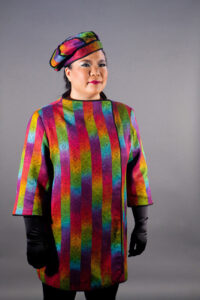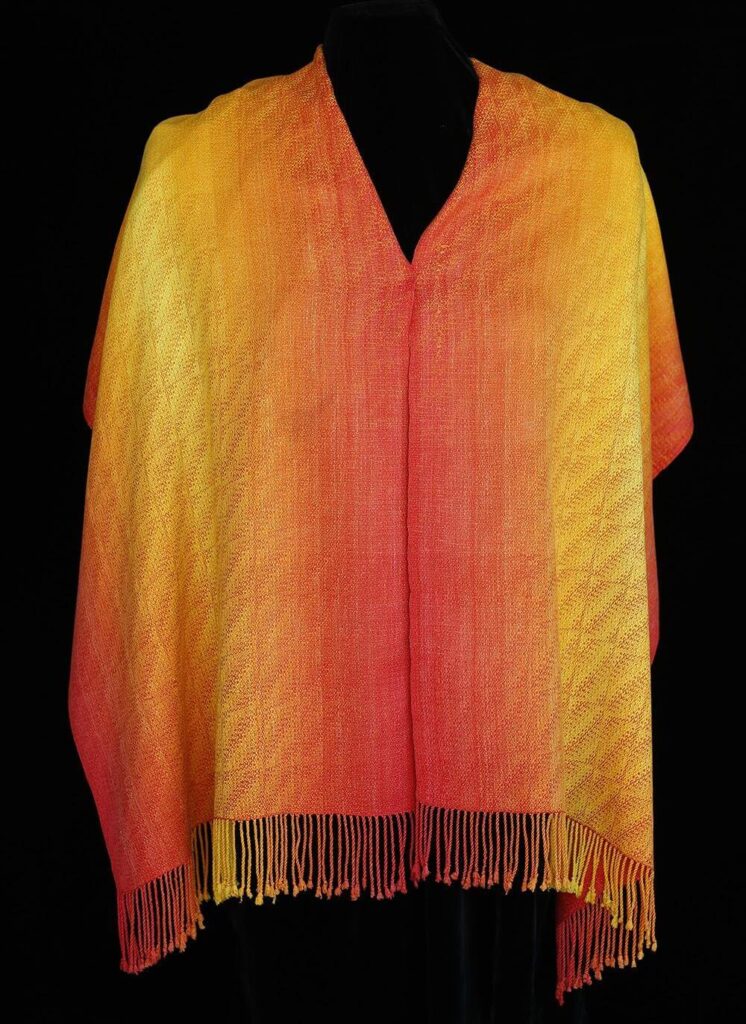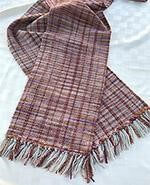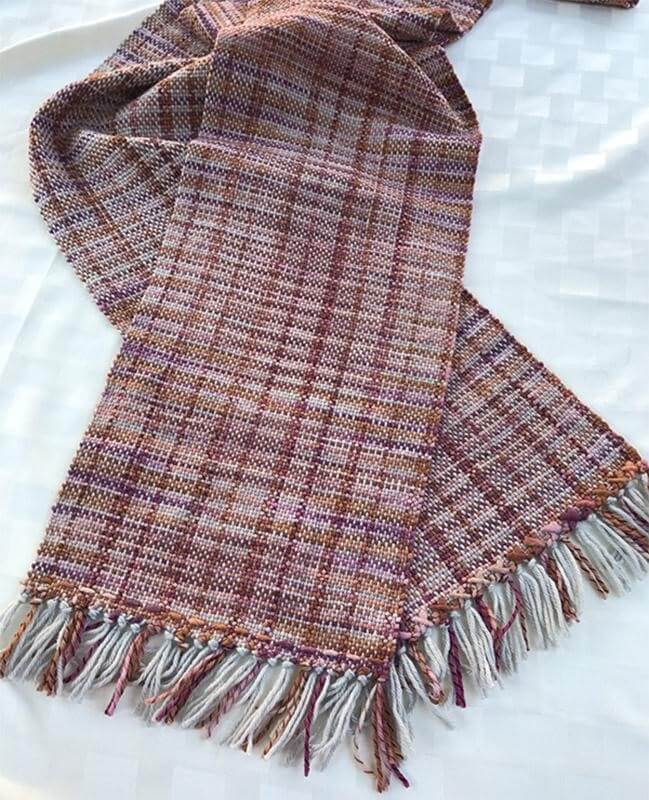Multiple pattern scales can be used intentionally to create pieces that transform as you walk up to them. It’s particularly important for fashion show garments or wall hangings, which are apt to be seen from both close and far away, but even with accessories such as scarves or shawls, you can create pieces that will offer interest at multiple viewing distances.


My “Liquid Fire” shawl, for example, appears to be entirely shades of yellow, orange, and red-orange from a distance. But seen close up, it uses a subtle eight-shaft design to add texture and interest.

And this rigid-heddle scarf by Stonewater Arts, made in plain weave using stripes of a hand-dyed skein alternating with a solid color in the warp, and a hand-dyed skein as weft, shows a plaid pattern at a distance;

and a delightfully heathered look close up:

Scale considerations when designing
When designing cloth with large areas of color – whether that be colored stripes in warp or weft, painted warps, or drafts that create big chunks of color – the most important thing is to simulate your cloth at the right scale.
The most common mistake weavers make when designing cloth is to look at the draft at a scale that looks reasonable in weaving software. Usually, that’s something about this size:

Unfortunately, that’s far larger than your woven fabric will appear! It’s like visualizing your fabric by putting your sample six inches from your nose. It’s easy to edit the draft this way, but it won’t tell you how the end product will look.
The next most common error is to resize the draft for the viewing distance from your monitor – that is, to make the threads the size they would be if they were placed on top of your monitor, and judge the design as if the piece were sitting on your monitor. For a piece woven in a medium size cotton yarn (10/2 cotton, 4200 yards per pound or 2100 m/kg), that might look like this:

Most monitors are located about 12-18” from your eyes. If you are planning a piece that will be viewed from 12-18” away (napkins, for example), then this is the right size at which to view your draft.
But if you are planning a piece that will be seen from across the room, you will either want to shrink your draft view further, or walk across the room to get a true view of your piece as it will be seen from across the room.
This 12” scarf design would appear more like this when seen from across the room:

That’s quite a difference!
Zoomed-in views are useful for editing drafts, or in seeing how a piece would appear to someone standing next to you. But to get the full picture of how others will see your work, you need to envision it at many distances, not just one. So don’t just view your draft designs close up – look at the design from a distance, too!
Happy weaving!


